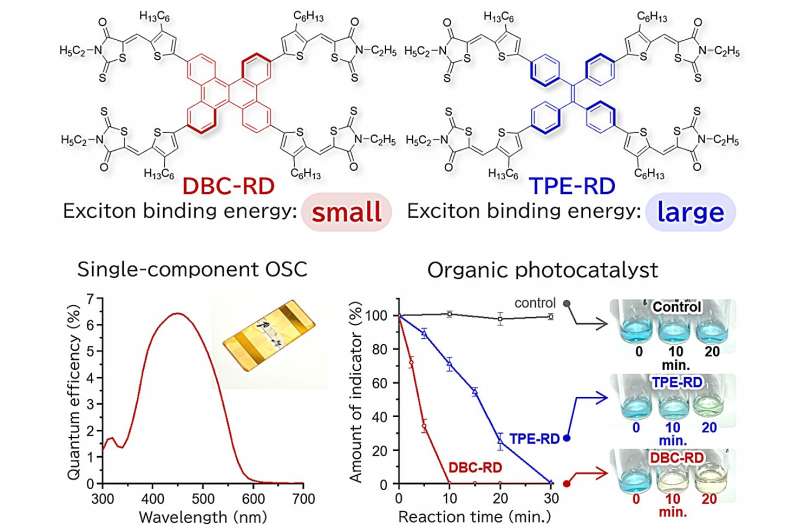Phys.org August 6, 2024
To further improve the efficiency of optoelectronic devices to convert sun light into electricity, researchers in Japan investigated the relationship between aggregation and Exciton binding energy (Eb) and tetraphenylethylene (TPE). Although theoretical calculations and physical measurements in solution showed no apparent differences between DBC-RD and TPE-RD, the pristine films incorporating these molecules showed significantly different levels of electron affinity, ionization potential, and optical gap. Also, DBC-RD had a smaller Eb value compared with that of TPE-RD. However, these molecules showed similar Eb values under dispersed conditions, suggesting that the decreased Eb of DBC-RD in pristine film was induced by molecular aggregation. In comparison with TPE-RD, DBC-RD showed superior performances in single-component organic solar cells and organic photocatalysts. According to the researchers these results indicated that a molecular design suitable for aggregation is important to decrease the Eb in films… read more. TECHNICAL ARTICLE

Molecular structures of the organic semiconductors… Credit: Osaka University